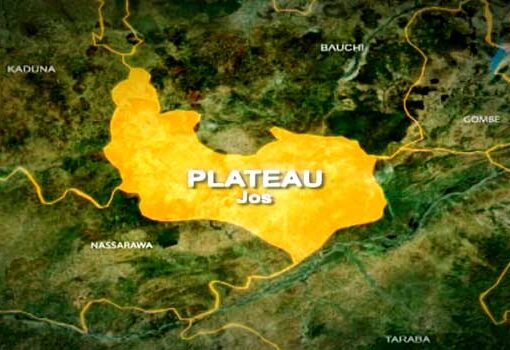“Almost all agreements, MoU etc signed by the government of our country are not implemented,” he said.
Mr Ajala told this newspaper that 10 per cent of the national budget or more can be allocated to the agriculture sector if there is a willingness on the part of the government.
“However, you know everything is politicised here, such allocation would be hijacked by the politicians for selfish reasons,” he said.
![INFOGRAPH: How Nigeria perpetually flouted the MAPUTO AGREEMENT signed in 2003. [CREDIT: Kabir Yusuf]](https://media.premiumtimesng.com/wp-content/files/2020/02/dcebe41f-3078-4715-826d-0f1e595f575d.png)
INFOGRAPH: How Nigeria perpetually flouted the MAPUTO AGREEMENT signed in 2003. [CREDIT: Kabir Yusuf]
Checks by PREMIUM TIMES revealed that in 2003 when the pact was signed, budgetary allocation to agriculture was N18.05 billion, representing a measly 1.85 per cent of the national budget of N976.3 billion.
| YEAR | AGRIC ALLOCATION | NATIONAL BUDGET | PERCENTAGE (%) |
|---|---|---|---|
| 2003 | 18,048,971,868 | 976,254,543,375 | 0.0185 |
| 2004 | 18,984,349,367 | 1,302,523,844,588 | 0.0146 |
| 2005 | 20,474,709,808 | 1,799,938,243,138 | 0.0114 |
| 2006 | 30,813,391,000 | 1,899,987,922,467 | 0.0162 |
| 2007 | 38,300,000,000 | 2,266,394,423,477 | 0.0169 |
| 2008 | 134,859,874,260 | 2,492,076,718,937 | 0.0541 |
| 2009 | 166,924,361,057 | 3,101,858,996,078 | 0.0538 |
| 2010 | 55,334,891,441 | 4,206,465,676,684 | 0.0132 |
| 2011 | 65,868,226,097 | 4,484,736,648,992 | 0.0147 |
| 2012 | 81,209,867,833 | 4,877,209,156,933 | 0.0167 |
| 2013 | 83,204,844,639 | 4,987,220,425,601 | 0.0167 |
| 2014 | 67,044,675,939 | 4,695,190,000,000 | 0.0143 |
| 2015 | 40,621,020,717 | 4,493,363,957,157 | 0.009 |
| 2016 | 75,806,548,275 | 6,060,677,358,227 | 0.0125 |
| 2017 | 135,545,345,061 | 7,441,175,486,758 | 0.0182 |
| 2018 | 172,796,092,743 | 8,612,236,953,214 | 0.0201 |
| 2019 | 137,871,024,261 | 8,916,234,441,501 | 0.015 |
| 2020 | 183,081,647,920 | 10,608,332,364,829 | 0.0173 |
Between 2004- 2007, allocations to the agricultural sector relative to total national budget fell to 1.46 per cent in 2004, then to 1.14 per cent in 2005, before it went up to 1.62 per cent and 1.69 per cent respectively in the next two years.
Nigeria recorded the highest budgetary allocation to its agricultural sector in 2008 and 2009.
The 2008 budget allocated 5.41 per cent (N134.90 biĺlion) of the N2.4 trillion total to agriculture. The N166.90 billion allocated to the sector in 2009 was 5.38 per cent of the N3.1 trillion national budget.
Least allocation
In 2015, agriculture drew the least budgetary allocation with only 0.9 per cent of the N4.49 trillion total.
Also, between 2016 –2019, Nigeria budgeted 1.25, 1.82, 2.01 and 1.50 percent of the N6.10, N7.44, N8.61 and N8.92 trillions total respectively .
How Nigeria perpetually flouted the MAPUTO AGREEMENT signed in 2003
| YEAR | NATIONAL BUDGET | AGRIC ALLOCATION | WHAT SHOULD HAVE BEEN BUDGETED | DEFICIT | PERCENTAGE |
|---|---|---|---|---|---|
| 2003 | 976,254,543,375 | 18,048,971,868 | 97,625,454,337.5 | 79,576,482,469.5 | 0.018487977331817 |
| 2004 | 1,302,523,844,588 | 18,984,349,367 | 130,252,384,458.8 | 111,268,035,091.8 | 0.014575049390366 |
| 2005 | 1,799,938,243,138 | 20,474,709,808 | 179,993,824,313.8 | 159,519,114,505.8 | 0.01137522905914 |
| 2006 | 1,899,987,922,467 | 30,813,391,000 | 189,998,792,246.7 | 159,185,401,246.7 | 0.016217677299754 |
| 2007 | 2,266,394,423,477 | 38,300,000,000 | 226,639,442,347.7 | 188,339,442,347.7 | 0.016899088527248 |
| 2008 | 2,492,076,718,937 | 134,859,874,260 | 249,207,671,893.7 | 114,347,797,633.7 | 0.054115458499016 |
| 2009 | 3,101,858,996,078 | 166,924,361,057 | 310,185,899,607.8 | 143,261,538,550.8 | 0.053814296932278 |
| 2010 | 4,206,465,676,684 | 55,334,891,441 | 420,646,567,668.4 | 365,311,676,227.4 | 0.013154723155764 |
| 2011 | 4,484,736,648,992 | 65,868,226,097 | 448,473,664,899.2 | 382,605,438,802.2 | 0.014687200442819 |
| 2012 | 4,877,209,156,933 | 81,209,867,833 | 487,720,915,693.3 | 406,511,047,860.3 | 0.016650888903864 |
| 2013 | 4,987,220,425,601 | 83,204,844,639 | 498,722,042,560.1 | 415,517,197,921.1 | 0.016683610816936 |
| 2014 | 4,695,190,000,000 | 6,7044,675,939 | 469,519,000,000 | 40,247,432,4061 | 0.014279438305798 |
| 2015 | 4,493,363,957,157 | 40,621,020,717 | 449,336,395,715.7 | 408,715,374,998.7 | 0.0090402248970505 |
| 2016 | 6,060,677,358,227 | 75,806,548,275 | 60,6067,735,822.7 | 530,261,187,547.7 | 0.012507933320703 |
| 2017 | 7,441,175,486,758 | 135,545,345,061 | 744,117,548,675.8 | 608,572,203,614.8 | 0.018215582377033 |
| 2018 | 8,612,236,953,214 | 172,796,092,743 | 861,223,695,321.4 | 688,427,602,578.4 | 0.020064019799004 |
| 2019 | 8,916,234,441,501 | 137,871,024,261 | 891,623,444,150.1 | 753,752,419,889.1 | 0.015462920492453 |
| 2020 | 10,608,332,364,829 | 183,081,647,920 | 1,060,833,236,482.9 | 877,751,588,562.9 | 0.017258287318277 |
This year, the federal government plans to spend N183 billion on agriculture, representing 1.73 per cent of the 10.6 trillion national budget.
Low allocations, curious projects
While Nigeria’s agricultural sector struggles to draw more allocation, an analysis of this year’s agriculture budget by PREMIUM TIMES showed that the spending plan contains vague projects, some of which are completely out of the scope of agriculture.
PREMIUM TIMES reported how some agencies under the Federal Ministry of Agriculture and Rural Development (FMARD) are planning to execute projects that have no agricultural significance.
For instance, 80 per cent (55 of 68) of the projects to be executed by the Nigerian Stored Products Research Institute (NSPRI) are capacity-building and empowerment projects which ICPC advised should be suspended.
NSPRI, an agency headquartered in Ilorin, Kwara State, has a primary mandate to curb post-harvest loss of crops in Nigeria. But in the 2020 budget, the agency plans to construct “ICT centres” and provide “equipment in selected secondary schools in Lagos.”
It plans to repeat these “projects” three times this year at a total cost of ₦768 billion — first for ₦255 million, then ₦256 million and ₦257 million.
Other such projects extraneous to agricultural development were discovered in the budgets of River Basin Development Authority (RBDA), Federal College of Fisheries and Marine Technology, Lagos, Forestry Research Institute of Nigeria (FRIN), and National Center for Agricultural Mechanisation among others.
Adegboyega Taofeek, a senior research fellow at the International Institute of Tropical Agriculture (IITA), said there is an urgent need to reverse the trend of inadequate budgetary provisions.

“It is worrisome to note that we are far below the 10 per cent annual budgetary allocation as agreed upon in Maputo Declaration. The sequence of the budgetary allocations shows the agriculture sector received 1.86 % in 2017; 2.23 % in 2018 and far less than 3 % in the 2020 budgets.”
Mr Taofeek said low budgetary allocations and lack of political will are the major factors hindering the development of the sector.
He urged the National Assembly and the executive to “walk the talk if really the government is serious about diversification of the economy through agriculture, which has been seen as a valuable tool in reshaping the economy.”
Prospects
The World Bank forecasts that Africa’s food market will grow to $1 trillion by 2030. In the case of Nigeria, PricewaterhouseCoopers (PWC) suggests that for the country to maintain its share of the continent’s agriculture Gross Domestic Product (GDP), it has to grow the sector’s revenues by a compounded annual growth rate (CAGR) of 4.7 per cent.
For this to be achieved, the agricultural budget to GDP will have to be sustained at least at seven per cent annually, the group wrote in its report, titled: Evaluating Agriculture Finance in Nigeria.
Mr Adegboyega said there must be more budgetary provisions for agriculture, particularly given increasing population, food insecurity and adverse effects of climate change.
Mr Ajala noted that Nigeria has fertile soil but this alone will not improve output.
“There is a need to research for improved seeds, pesticides and herbicides. However, the most important is improved storage facilities to curb post-harvest losses,” he said.
How other countries are faring
A report by Messrs Bassey and Omeremma, titled; “Agricultural Expenditure, Maputo Declaration Target and Agricultural Output: A case study of Nigeria” noted that nine out of 55 countries of the AU member states have met the Maputo target, but Nigeria is not among them.
Of the nine compliant countries, seven have been consistent over the years. They are Burkina Faso, Ethiopia, Ghana, Malawi, Mali, Niger and Burundi.
The report showed that countries like Ghana, Ethiopia and Burkina Faso have achieved tremendous improvement on their agricultural GDP, with a growth rate above 10 per cent of national GDP.
Between 2005 and 2014, Ghana’s average annual growth rate in the agricultural sector was 9.5 per cent. This was attributed to an increase in expenditure of the sector.
PREMIUM TIMES







